The 15 Best White Label Video Platforms and Streaming Services
For broadcasters and businesses using a white label video platform, delivering high-quality video resolution is no longer just a technical consideration—it’s a brand asset.
Video streaming technology has undergone unprecedented growth. Around 76% of consumers watch online TV or streaming daily, spending an average of 1 hour and 22 minutes per day. Furthermore, Fortune Business Insights is forecasting a whopping 19.3 percent growth in the global video streaming industry by 2030.
In 2025, streaming technology has evolved to support AI-enhanced features, seamless OTT app delivery, and advanced monetization tools. Whether you’re managing white label live streaming, launching a private label VOD platform, or building a white label TV streaming service, the quality of your video—especially its resolution—directly impacts user experience and engagement.
This guide is built for broadcasters looking to scale with white label streaming services that offer full branding, secure delivery, and flexible monetization. Platforms like Dacast’s video hosting and online video platform solutions are designed for professional use across industries like education, fitness, enterprise training, and live events. With tools for video marketing, custom paywalls, and enterprise video streaming, Dacast’s streaming solutions can power your next step in growth.
Table of Contents
- What Does the Term White-Label Mean?
- How Does White Label Video Streaming Work
- Trends in White-Label Video Streaming for 2025
- How AI is Enhancing White-Label Video Experiences
- Pros and Cons of Using a White-Label Video Player
- What Makes a Good White-Label Video Platform?
- White-Label OTT Apps vs. Web Streaming
- Use Cases and Industries
- Types of White-Label Streaming Platforms
- What to Expect from a White-Label Platform
- How to Customize Your HTML5 Video Player
- Video Player Monetization
- Accessibility and Localization Features
- Building a Complete White-Label Video Delivery Ecosystem
- How White-Label Streaming Supports Brand Growth
- How to Pick The Right White-Label Streaming Service
- Top 15 White-Label Streaming Services
- FAQs
- Evaluating White-Labelling on a Global Scale
- Conclusion
What Does the Term White-Label Mean?

The term white label isn’t new. You’ve probably seen it before in other industries. When a product is white-label, it’s produced by one company and then packaged and sold by another. The original manufacturer doesn’t put their name on the white-label product. That’s usually done to save money or offer a lower price point.
The white-label video service provider is the original manufacturer, and they sell their product to you without their branding. You can then put your branding on the product and sell it as if it were yours.
What Is White-Label Streaming?
Within streaming video content, white-label means using another company’s software to broadcast your content, using an interface you can customize. For example, you can customize the video player, so it doesn’t contain logos or links connecting to the software provider.
You don’t have to create a video streaming and hosting platform; instead, you can purchase the platform from a provider and customize the player to fit your needs. That allows you to focus on creating quality content instead of creating the software to host your content.
White-label video players have been around for years. JW Player has been offering a white-label video streaming platform for over a decade. However, their white-label video streaming requires someone to be tech-savvy to use it.
What’s new on the white-label video scene are players like those offered by Dacast. Video players like Dacast make it easy for those without a technical background to use their technology.
Easy-to-use video players allow more broadcasters and businesses to use white-label video streaming to share and promote their unique online video content.
How Does White Label Video Streaming Work
White-label streaming allows users to link your live videos to your brand and not the site you use to broadcast them. This gives you complete control over your audience’s viewing preferences as well as the freedom to adjust your content to fit these preferences.
Here are some common characteristics of white-label video streaming.
- A prebuilt platform: White-label video players like Dacast provide fully functional streaming capabilities, including video hosting, security, content management, and so on.
- Rebranding: Such platforms allow the businesses that use them to rebrand their streams. They have rebranding elements that allow them to change logos, colors, designs, etc.
- Content management: white-label video streaming platforms have content management systems that allow users to easily upload videos on the platform.
- Integration: A white-label video streaming site would seamlessly integrate with the broadcaster’s company website for a consistent user experience.
Trends in White-Label Video Streaming for 2025
In 2025, white label video streaming is evolving quickly to meet growing demand for smarter, faster, and more personalized video experiences. AI-driven personalization is now central to every white label video subscription platform. Features like AI video recommendations, dynamic watermarking, and predictive engagement tools are helping businesses better serve their viewers and protect content.
Modern white label video software also supports AI-assisted video production, including real-time captioning and automatic multilingual translation. This is especially useful for enterprise video streaming solutions and educational platforms that serve global audiences.
White label OTT apps are getting more advanced too, with seamless cross-device syncing and better branded video player support. Businesses are also prioritizing ultra-low latency live streams. With edge computing, white label streaming developers can now deliver near-instant playback—essential for sports, events, and real-time broadcasts.
How AI is Enhancing White-Label Video Experiences
AI is transforming white-label video platforms by making content smarter and delivery more efficient. Automatic subtitles increase accessibility while improving SEO. AI-generated thumbnails can boost click-through rates by matching visuals to viewer preferences.
Engagement analytics powered by AI reveal what content performs best, helping you adjust strategies in real-time. Advanced platforms are also using AI to optimize content delivery via CDN, reducing buffering and improving playback—especially on a global scale. These innovations allow businesses to get more value from their video content while creating a smoother, more personalized viewer experience.
Pros and Cons of Using a White-Label Video Player

A white-label video streaming platform’s list of benefits is miles long. To thoroughly discuss the benefits of white-label online video platforms, we need to discuss some drawbacks of free video streaming and hosting platforms like YouTube.
Cons of Using a Free Video Streaming and Hosting Service
Many businesses and individuals turn to free services when they first start creating content because they are familiar with them. One of the most famous names in the streaming business is also free: YouTube’. However, these platforms have many drawbacks, especially for companies and organizations.
- Advertising: When you use a free video hosting service, they have the right to run advertisements on your content. You have limited control over if and when advertisements run on your content.
- Monetization: With a free video streaming service, you can only monetize your content within the platform’s restrictions. YouTube, for example, requires you to have a certain number of subscribers and view hours before you can make money from the advertisements they run on your content.
- Content restrictions: Free video services have content restrictions in place, which means you don’t have the freedom to show whatever you want on their platforms.
- Video suggestions: Free video services suggest other people’s content to watch, taking viewers away from your content.
- No branding: You can include watermarks on your videos, but you can’t add custom branding to the video player and create an on-brand experience.
Pros of Using a White-Label Video Player
Working with a paid, white-label video player offers many benefits compared to free video players. Here are a few of the most significant benefits of working with a white-label video player.
- Advertisement-free: With white-label video streaming, you can create an advertisement-free and distraction-free environment for your viewers.
- Multiple monetization options: You can monetize or not monetize your content how you want. You can run advertisements, offer pay-per-view content, or offer subscriptions to your content. Or you can offer video content for free.
- No content restrictions: There are no restrictions on what type of content you can create and share with a white-label video player.
- Customized branding: You can customize the branding throughout your video player, changing the fonts, colors, and other elements of the video player. That allows you to create a cohesive brand experience for your viewers.
- Personalized video suggestions: You control video suggestions, keeping people engaged with your content.
- Content management system: As you grow, you will enjoy the content management systems (CMS) that white-label video streaming offers. More organized content means easier scalability. A white-label video player offers the above benefits and more. A white-label streaming service’s list of benefits is miles long. White-label video streaming platforms provide clean and professional video players to broadcasters and flexibility for branding, video monetization, organization, and more.
The Dacast video player prioritizes white-label functions and features. The idea is that broadcasters maintain ownership of their content throughout the streaming process. This ownership is valid both from a legal perspective and from the perspective of your viewers.
Unlike free providers like YouTube, Dacast doesn’t claim ownership of your content. Likewise, Dacast does not void any of your rights as a broadcaster.
Our video player is free of Dacast logos and provides ad-free streaming. You have complete branding control of your content with a customizable and embeddable HTML5 video player.
What Makes a Good White-Label Video Platform?
Choosing the right white-label advertising platform starts with a solid feature checklist. Here are the essentials to look for:
- Branding flexibility: Add your own logo, colors, and domain without the provider’s branding.
- Multi-CDN delivery: Ensure global reliability and fast playback by using multiple content delivery networks.
- API access: Automate workflows and integrate with your own systems using robust APIs.
- Mobile SDKs: Launch branded mobile apps for iOS and Android to meet modern viewer expectations.
- Monetization options: Use custom paywalls, subscriptions, or ads to support different revenue models.
A whitelabel video on demand platform that includes all of the above helps businesses scale video without sacrificing control or user experience.
Why Dacast Stands Out
Dacast goes beyond the basics by offering global video delivery that includes reliable streaming into China—something missing from platforms like Vimeo, JW Player, and Vidyard.
While many competitors focus on standalone tools, Dacast provides a true all-in-one solution. It includes live streaming, video hosting, monetization, analytics, and custom branding under one roof. Businesses also benefit from flexible paywall options and monetization models, allowing for subscriptions, rentals, or pay-per-view—unlike more limited setups on other platforms.
With advanced features like API access, mobile SDKs, AI-powered analytics, and multi-CDN delivery, Dacast supports both scale and sophistication, making it the ideal choice for professional white-label streaming in 2025.
White-Label OTT Apps vs. Web Streaming
While web streaming is still common, the future is moving toward white-label OTT apps. In 2025, viewers expect to watch content directly on their smart TVs, Roku, or Amazon Firestick. OTT apps offer a native experience with better performance and a branded interface right on the home screen.
Web-based streaming may be easier to launch, but apps keep viewers more engaged and accessible across devices. If your business wants to grow audience reach and stay competitive, investing in a white-label OTT solution is key. It turns casual web viewers into long-term subscribers with content that’s just a click away on their favorite devices.
Use Cases and Industries
Education: white-label LMS integrations
Educators and e-learning companies use white label video on demand platforms to power learning management systems with fully branded video content. With AI video streaming platforms, they can offer auto-captioning, progress tracking, and analytics for deeper learner engagement. A white label VOD platform ensures content remains private and professional while offering scalable delivery worldwide.
Fitness: monetized on-demand classes
Online fitness brands and studios use custom paywall video streaming to sell on-demand workout videos. With monetization for white label video, businesses can bundle classes, offer subscriptions, or sell single sessions. These white label products integrate smoothly across websites and apps, delivering a consistent brand experience.
Enterprise: secure internal training with DRM
Corporations rely on white label video hosting for internal communications and training. DRM protection and private label videos ensure content remains secure. These white label OTT solutions support global teams with adaptive playback and robust content controls.
Events: branded, ticketed virtual events with branded video portals
Organizers use the best white label OTT platform to host branded live streams, webinars, and virtual conferences. Features like white label video advertising, secure logins, and branded video portals create a premium experience. With white label streaming TV and white-label streaming apps, businesses can reach audiences on any screen.
Types of White-Label Streaming Platforms
While discussing video streaming, it is essential to acknowledge a few different kinds of online video content, including live streaming and VOD. In addition, OTT technology, a media delivery method, is also very relevant in this regard.
Let’s look at how these types of streaming tie into white-label video platforms.
White-Label OTT Platforms
White-label OTT platforms provide businesses with a customizable solution for delivering over-the-top (OTT) content, such as video, audio, and other digital media, directly to consumers. With a white-label platform, companies can launch their own branded streaming service without having to build the technology from scratch.
One key benefit is full branding control, allowing companies to deliver content with their own logo, design, and interface. This creates a consistent, recognizable brand experience for users. Also, white-label OTT platforms come equipped with advanced features like subscription management, analytics, and multi-device compatibility, offering a seamless viewer experience across smartphones, tablets, and smart TVs.
These platforms also support monetization through subscriptions, ads, or pay-per-view models, enabling companies to generate revenue while maintaining control over content distribution.
White-Label Live Video Streaming Platforms
A white-label live video streaming platform is an online video platform with tools specifically dedicated to live streaming. As the name suggests, a live video streaming platform broadcasts video content in real-time.
A live video streaming platform can be used to host virtual events, connect with an audience, and much more.
This type of video streaming is more valuable than ever before. Not only is there a more practical demand for video streaming in a post-pandemic world, but consumers are also more literate and comfortable with these streaming experiences. It creates a more lifelike experience than on-demand video streaming. In addition, the real-time nature of live streaming establishes a sense of urgency and exclusivity that captures viewers’ attention.
We have white-label live video streaming in the same category as white-label conferencing. Entire industries are reconsidering how and where they do business. More and more industries have seen what telecommunication and remote work can accomplish. Accordingly, the need for white-label video conferences has grown.
Some video platforms offer real-time latency or video conferencing integrations that allow professionals to host video conferences on reliable servers without third-party branding. That allows businesses and organizations to access the benefits of an online video platform, such as advanced security and high-quality streaming.
White-Label VOD Platforms
White-label VOD platforms allow businesses to offer on-demand video content under their own brand, free of third-party logos or ads. This customization helps create a cohesive brand experience, enhancing viewer trust and engagement.
With a white-label VOD platform, businesses can control every aspect, from video player design to monetization strategies. These platforms also offer advanced features like secure video hosting, analytics, and scalable storage.
Overall, white-label VOD solutions give companies the flexibility to grow their content library while maintaining full control over their brand and audience experience.
What to Expect from a White-Label Platform
A brandable video streaming platform gives you complete control over your content. It’s fully customizable and offers a wide variety of features that can be tailored to your needs.
Some things you can expect from a white-label video player are:
1. Your Brand Logo in the Corner of the Player
The logo is possibly the most crucial part of the white-label player. It ensures that viewers remember who is providing the content while watching it. Your video platform should allow you to place the logo strategically on the player.
2. Customizable Color Scheme
Your white-label video streaming platform allows you to change the player interface’s colors to match your brand. That adds to the viewer’s experience by providing a consistent look and feel between your site and the video player.
3. Your Domain Name
When someone shares your video with their followers, the first thing they’ll see before opening the video is your domain. A customized URL will instill confidence in your brand and encourage viewers to watch your videos.
4. A Video Player That Reflects Your Brand
The video player is the most critical part of the white-label video streaming platform. It should allow you to customize every aspect of the player, from the size and shape to the colors and branding.
5. The Ability to Change the Language
Your white-label platform should offer the option to change the language of the player interface. That’s important if you’re targeting a global audience.
6. Custom CSS
If you want to take your branding a step further, you should be able to add custom CSS to the player. That will allow you to change the player’s look and feel, which is impossible with the other customization options.
How to Customize Your HTML5 Video Player
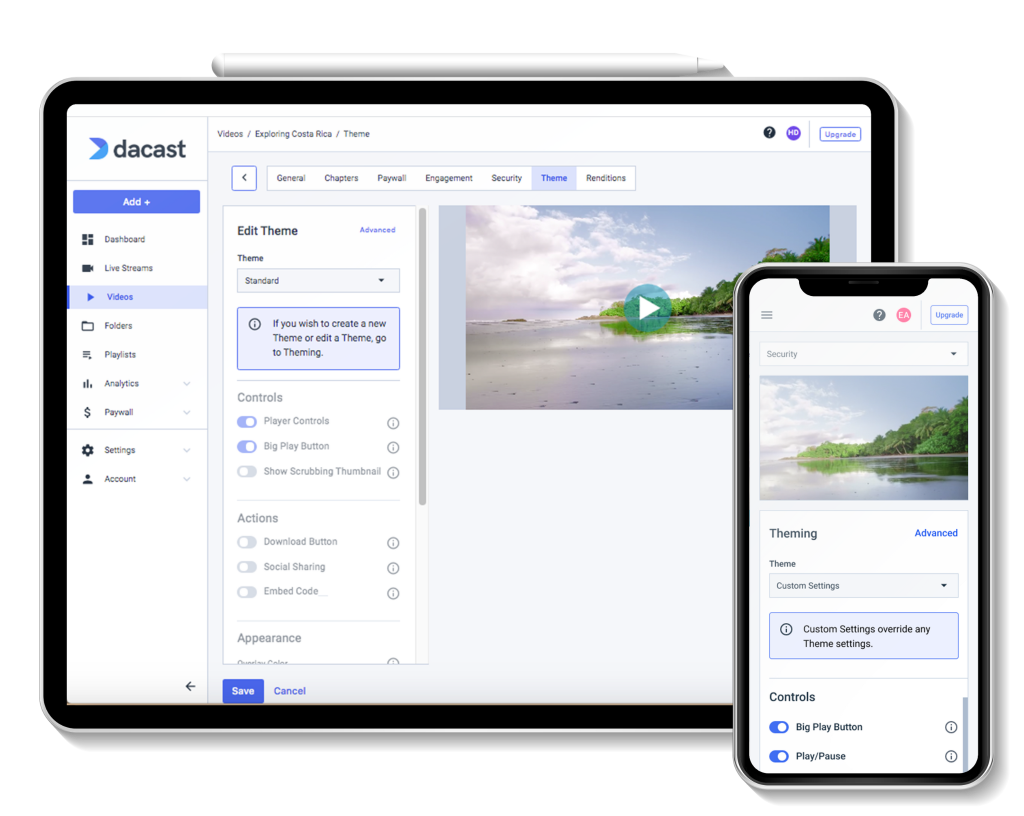
Each white-label service will have its own process for customizing your HTML5 video player. Generally, this process involves configuring an array of preset features and settings to choose from and accessing player API.
Preset features are a great way to experiment with how to create a custom HTML5 player for your exact needs. Suppose you aren’t sure what all the customization options mean. In that case, the preset features give you a place to start and can encompass all the basic customizations most people require.
Here are a few features that you can customize:
- Font style
- Font size
- Font color
- Background color
- Overlays
- Logo integration
- Watermarks
API access allows you to customize your player beyond the standard settings. That means that if there isn’t a setting that helps you customize an aspect of the HTML5 video player, you can program it manually.
Customizing your all-device video player with API takes more technical know-how than simply changing preset settings. Interested in using API for that custom experience but don’t have a technical background? In that case, it’s a good idea to hire a skilled programmer to help you.
On the Dacast video platform, broadcasters can create and add custom themes to their media players. That makes matching them to the look and feel of the existing website easier. That helps your custom HTML5 video player seamlessly integrate into your existing assets.
You can also save themes to your account, which makes it quick and easy to have many channels with the same look and feel. As a result, your viewers are guaranteed a more consistent experience when accessing your content.
Two of the most common white-label video player customizations are monetization and accessibility.
Video Player Monetization
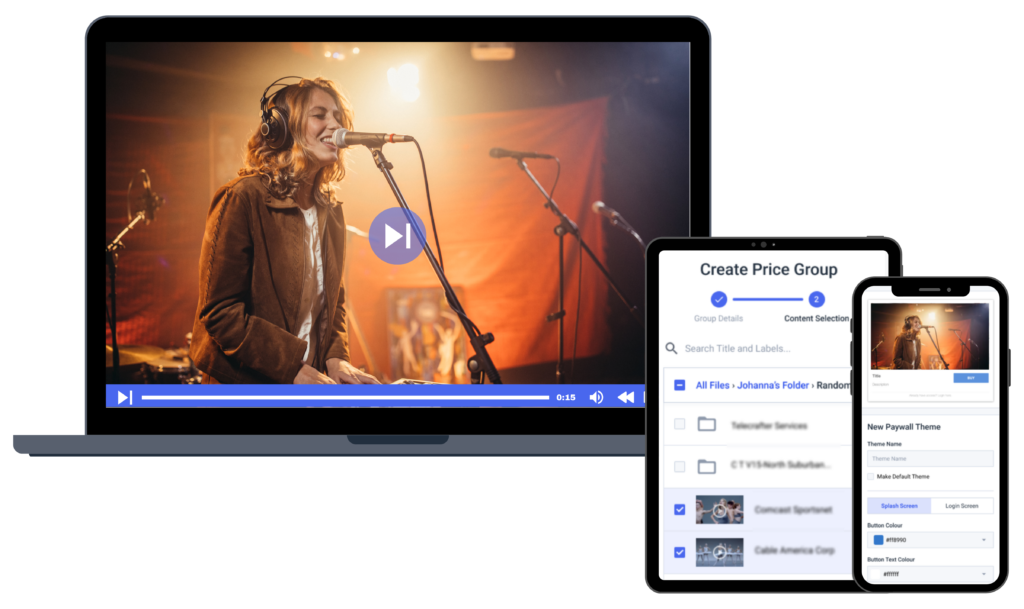
An essential part of broadcasting is monetizing the content you create. Different white-label vod platforms will offer you different monetization options and resources.
Advertising-based Video On Demand Model
One of the most popular ways of monetizing video content is through ads. You can run promotions before, during, and after your video content. You can work with outside advertising networks or recruit your advertisers.
This gives you a competitive edge since you can skip the subscription phase, and have users view your content for free as long as they can sit through your advertisement. Most free video streaming platforms like YouTube use this model.
However, with white-label video streaming services, the business gets control over the ads that they can show on their streams, as well as the businesses they partner with to make these ads.
Subscription-Based Video On Demand
This is another popular video monetization model where you can offer your viewers subscriptions and they get unlimited access to your content for a set time. This could be yearly or monthly. Most entertainment streaming and e-learning platforms use this monetization model.
This monetization model allows users to consume a wide range of content without the interruption of advertisements. Businesses that broadcast educational content may find this model more ideal.
With a subscription-based model, profitability is based on the assumption that users will only watch a fraction of your content. When users watch a large number of videos than usual, it can lead to losses.
Transactional-Based Video On Demand Model
This is a newer monetization model, also known as pay-per-view. Here, you can charge for access to specific content and you’ll only pay for what you watch. This is an alternative monetization model for users who do not want to be tied up by the recurring expenses of the subscription-based model.
This is because, with a subscription-based model, viewers may end up paying for videos they won’t watch, which may lead to unsubscriptions if they only like a few of your streams.
The transactional-based model helps fill the gaps that come with this model. Users get to choose what to pay for. And for broadcasters, they’ll know what their viewers like more which will help with their content creation process.
Premium Video On Demand Model
This is also a relatively newer pricing model that lets users access premium content at an extra fee. It’s a variation to the transaction-based model that gives you early access to content before it’s released to other users.
This monetization model allows broadcasters and streaming services to actively pursue customers and keep them around. Movie streaming platforms would find this model to be the most ideal.
Membership and Patreon Model
This model is a variation of the subscription-based model where video streaming services put part of their content behind a paywall so viewers can access it exclusively. Unlike subscriptions, however, members or patrons feel like they’re part of an exclusive community.
This model uses the Patreon platform and is popular in the digital video creation space. Patreon is a membership platform that allows creators to monetize their content through the support of their fans, or “patrons”.
Membership and Patreon models have a similar structure regarding monetization and content access. The only difference is that the membership model is more focused on building a community while the Patreon model encourages direct support from fans.
Implementing these monetization methods requires additional tools that many white-label video streaming platforms offer.
For example, the Dacast video platform includes white-label video monetization with a customizable integrated paywall. That means you set the parameters for what payments will look like, and the Dacast player will handle the payments.
The process is easy for you, the broadcaster, and your viewers. This integration allows you to control rates, offer promo codes, and provide longer time windows for fast and easy access to your content.
Changes to your paywall should be done with the audience in mind. For example, you can add pricing in different currencies so that the paywall automatically populates with the appropriate pricing based on viewers’ location.
Due to legal obligations, the video paywall feature may not always be wholly white-labeled. Some regulations, for instance, require the company that powers the paywall to be named.
That should not pose any issues, but you can contact customer support directly for further questions about this aspect of white-label video streaming.
Accessibility and Localization Features
In 2025, accessibility and localization are essential parts of a professional video streaming strategy. Features like AI-powered auto-captioning, multi-language subtitles, and screen reader support help make content easier to access for global and diverse audiences.
White-label platforms like Dacast support these tools while also offering localized video players and content delivery networks that ensure high-quality playback worldwide. Whether you’re streaming live events or on-demand training, these features make it easier for businesses to reach more people, comply with regulations, and provide an inclusive viewing experience everywhere.
Video Player Customizations for Accessibility
Many online video platforms offer advanced customizations of their white-label video players and paywalls to enhance the accessibility of their content.
In this context, accessibility refers to making content for people with different abilities and in other countries.
Accessibility for People with Different Abilities
First, you want to ensure that people with all abilities can access your content. With video content, the two best ways to do that are with closed captions and subtitles.
A video player that automatically adds closed captions can increase the accessibility of your video content.
Accessibility for People in Other Countries
When sharing your video content around the globe, you want people to be able to understand your content. Automatic translation of subtitles and text-based information around your video player to match the language of the country of the person accessing your information makes the content more accessible.
Another way to make your content accessible to people in different countries is by translating the video paywall to match the local currencies.
Building a Complete White-Label Video Delivery Ecosystem
White-Label CDN
A white-label CDN (Content Delivery Network) is an essential tool for broadcasters seeking to deliver high-quality video content. It allows you to use a white label streaming platform with your own branding, providing a seamless experience for your audience. With a white label video streaming platform, broadcasters can deliver content with greater speed, reducing buffering and ensuring smooth playback.
One major benefit is control over the entire white label streaming service. Broadcasters can customize the platform to reflect their brand without needing to develop infrastructure from scratch. A white label live streaming platform also allows for real-time content delivery, which is critical for events like sports, webinars, or concerts.
Also, using a white-label streaming app or white-label video app enables broadcasters to extend their reach to mobile devices, giving viewers more access points. A white-label CDN ensures fast, reliable, and scalable video delivery, enhancing the viewer experience and maintaining brand consistency.
White-Label Video Production
White-label video production for streaming allows broadcasters to offer personalized video content under their own brand without building everything from scratch. By using the best white label OTT platform, broadcasters can provide seamless streaming experiences while maintaining control over their branding. A white label OTT platform offers flexibility, scalability, and cost-efficiency, letting businesses focus on content rather than infrastructure. With a white-label OTT solution, broadcasters can integrate white label video hosting and a white label VOD platform for video on demand, delivering a smooth user experience.
A white-label TV streaming service also ensures that broadcasters can manage live streaming efficiently. Using a white-label CDN for content delivery enhances video quality and reduces buffering, while the white-label video on demand feature allows users to access content anytime, giving broadcasters a competitive edge in the growing OTT industry.
White-Label Video Distribution
White-label video distribution offers a powerful way for broadcasters to deliver content under their own brand. With a white-label TV service, broadcasters can customize their platform, providing viewers with a seamless, branded experience. This white-label video solution allows for flexible control over design, user experience, and monetization.
A white-label TV streaming service enables broadcasters to offer live or on-demand content, including white-label live streaming for events and shows. Using a white-label video sharing platform allows easy content distribution, while white-label CDN ensures fast and reliable video delivery to global audiences.
From white-label video production to white-label video editing, broadcasters can streamline their workflow and maintain control over every step of content creation. By leveraging a white-label video distribution model, broadcasters benefit from increased control, scalability, and the ability to grow their brand presence while maintaining full ownership of the viewer experience. This approach is ideal for companies seeking to enhance their media strategy without the overhead of creating new technology.
White-Label Video Hosting
White label streaming platforms offer broadcasters a customizable video hosting solution, allowing them to stream content under their own brand without third-party logos or ads. This gives broadcasters full control over their content and brand experience, which helps build stronger connections with their audience.
A major benefit of white label video hosting is the ability to tailor the platform’s appearance to match your company’s identity, creating a consistent brand experience. Furthermore, these platforms offer advanced features like secure streaming, customizable players, and monetization options, helping broadcasters reach a wider audience while protecting their content.
Another advantage is the seamless integration with your existing systems, providing an efficient, hassle-free experience. With white label streaming platforms, broadcasters can deliver high-quality streams, grow their brand, and maintain complete control over their content.
How White-Label Streaming Supports Brand Growth
White-label streaming platforms help businesses do more than just host video. By using a platform that supports branded players, custom domains, and SEO-friendly embeds, you build brand recognition every time a viewer presses play.
These platforms also help generate leads through gated content, nurture loyalty with consistent branding, and boost engagement with interactive features. Over time, your videos can drive organic search traffic and position your company as a trusted source of content. A whitelabel video on demand platform ensures that every part of your video strategy supports your business goals, not someone else’s logo.
How to Pick The Right White-Label Streaming Service
Here are items to consider when picking your white-label streaming platform:
- Reliability: This refers to your platform’s ability to provide consistent streaming even during adverse conditions. Some factors that contribute to a platform’s reliability are multiple CDNs and low-latency streaming. Platforms with adaptive bitrate streaming capabilities are also reliable.
- Privacy and Security: In today’s digital marketing industry, privacy and security are crucial qualities. Your white-label streaming platform needs to have strong encryption and digital rights management to protect your videos and copyrights. This should enable you to have complete control over who views and shares your content.
- Customization: Customization features ensure you have control over how your videos appear to your audience. This helps with items such as branding. It also includes features such as API access to allow for even more customizations.
- Revenue possibilities: As mentioned revenue generation is an important part of online streaming, especially for video-on-demand content. Some monetization options include subscription, pay-per-view, advertising, and more. A great white-label streaming service should be able to provide diversified revenue generation options.
- Branding freedom: One of the top reasons that make white-label streaming services better for professional streaming is branding freedom. This makes it easy for viewers to identify live-streaming sessions with a given brand, giving broadcasters complete ownership of their software.
- Content management system: Check if your video streaming platform has a content library that supports bulk imports. Features such as drag-and-drop and content scheduling also help with content management.
Top 15 White-Label Streaming Services
Deciding which white-label video streaming platform is right for you depends on your needs. Some people are more in need of comprehensive white-label live stream services to respond to increasing digital user demands. For other people, it might be more critical to implement an intuitive content management system or to have the ability to customize an HTML5 video player.
No matter what’s most important to you, a solution is available on the market. These professional white-label streaming services allow broadcasters to customize the branding on the video player itself.
Let’s look at some of the best white-label video streaming platforms for live and on-demand video broadcasting.
1. Dacast

Dacast is a white-label streaming service that hosts live and on-demand video content. Moreover, our white-label video streaming platform offers cloud-based streaming solutions for professional broadcasters.
Dacast uses an HTML5 video player, which is highly customizable. That means that broadcasters can curate their video player with their branding. Ad-free streaming is also a significant plus of Dacast. This combination gives you the power to provide an on-brand, distraction-free viewing experience.
Key Features:
- 24/7 tech support with all plans
- Video security features, including password protection
- Low-latency HTML5 channels for video streaming
- Player API and Video API access on premium plans
- Multi-bitrate streaming and adaptive bitrate streaming via Cloud video transcoding
- Live encoding support for the top video encoders
- Zoom live streaming integration
- Ad-free streaming
- Live streaming and VOD hosting are included in all plans
- Easy to embed the HTML5 video player
- SVOD, AVOD, and TVOD pay-per-view monetization options
- M3U8 media links to stream to mobile and smart TV apps such as Roku, Apple TV, etc.
- SDK for player integration on iOS and Android platforms
New!
- AES video encryption on all plans
- Multi-user access on Scale and Custom plans
- Zoom live streaming integration for meetings and live events in real-time
- Simulcast allows streaming to multiple social media platforms like Facebook, YouTube, Twitch, and more, all at the same time
- Expo 4.0 galleries video portal for immersive video experiences
- See all of Dacast’s New Features
Pros:
- Mobile streaming support for excellent compatibility
- Support for video monetization tools
- Top-notch security for protection against piracy
- Low-latency video streaming
- China video delivery
- Pricing plans for every budget
Cons:
- An extensive collection of features creates a slight learning curve
Upload Guidelines and Specs:
- Minimum dimension: None (but 240p is the recommended minimum)
- Maximum dimension: 1080p or 4K (depends on the user’s hardware and internet)
- Video aspect ratio: No restrictions (but 16:9 is the default)
- Max file size: None
- Max video length: None
- Total file storage: 10-1000GB (depends on plan)
- Compatible video formats: MP4 (preferred), MOV, M4V, M2V, AVI, MPG, FLV, WMV, MKV, WEBM, OGV, MXF, ASF, VOB, MTS
Pricing:
Dacast has many live-streaming pricing options. The pricing packages are as follows:
- Starter: $39/month billed annually (includes 2.4 TB bandwidth and 500 GB storage)
- Event: $63/month billed annually (includes 6 TB bandwidth and 250 GB storage)
- Scale: $165/month billed annually (includes 24 TB bandwidth and 2 TB storage)
Broadcasters can contact Dacast directly to learn more about custom-priced high-volume plans.
Crucially, Dacast offers a free 14-day trial to each new user so you can test drive the software and choose the pricing solution that best meets your needs right now.
2. Muvi

Muvi is another excellent white-label streaming service. This video platform is primarily known for hosting video training platforms and online courses. Muvi’s education streaming solution has many features to help educators reach their audience.
Please note that Muvi is not only for educational institutions but organizations that need the ability to stream lectures, training sessions, and similar content.
This white-label platform supports multiple video monetization methods. Muvi also provides access to API and white-label video players. In addition, the video platform supports both video and audio streaming.
These features are managed and controlled from a single CMS, making it a perfect choice if you’re working in education.
Key Features:
- White-label platform: Customizable branding for a unique user experience.
- Multi-device support: Accessible on web, mobile, smart TVs, and gaming consoles.
- Monetization options: Subscriptions, pay-per-view, and ad-based models.
- Advanced security: DRM, encryption, and secure video player for content protection.
- Analytics: Detailed insights into viewer behavior and performance metrics.
- Content management: Easy upload, organization, and distribution of media.
Pros:
- User-friendly interface
- Robust security features
- Comprehensive monetization options
- High scalability and reliability
- 24/7 customer support
Cons:
- Higher pricing for advanced features
- Steeper learning curve for beginners
- Limited third-party integrations
Upload Guidelines and Specs:
- Minimum dimension: 144p (256 x 144)
- Maximum dimension: 4K (3840 x2160)
- Aspect ratio: 16:9, 4:3
- Max file size: not available
- Max video length: not available
- Total file storage: 1TB, 2TB, 5TB (depending on plan)
- Compatible video formats: MP4, MOV, MKV, FLV, VOB, M4V, AVI, 3GP, MPG
Pricing:
Muvi has a very wide spectrum of pricing plans divided in 7 categories, namely One, Live, Flex, Player SDK, Playout, TV, and Alie.
The pricing for the Muvi One category includes the following plans:
- Standard: $399/month
- Professional: $1,499/month
- Enterprise: $3,900/month
- Ultimate: Contact sales for price
Each plan has different features, such as the number of concurrent users, hosting options, and add-ons like the Alie recommendation engine.
The pricing breakdown for the Muvi Live plans is as followed:
- Standard: $99/month
- Professional: $299/month
- Enterprise: $799/month
Each plan includes unlimited events and meetings, Ad-free high quality Streaming, enterprise grade security, and custom branding.
Muvi Flex includes the following plans :
- Standard: $199/month
- Professional: $899/month
- Enterprise: $2,899/month
Each plan includes unlimited content and views, with varying features like the number of concurrent users, hosting options, and customization availability.
The Muvi Player SDK pricing includes the following:
- Pay as You Go: $0/month + $0.001 per view (first 100 views are free)
- Enterprise: $499/month + $0.001 per view (first 100,000 views are free each month). You’ll also need to pay $99/month for each additional platform.
Muvi Playout includes the following plans:
- Standard: $199/month
- Professional: $499/month
- Enterprise: $1,999/month
These plans differ in features such as the number of concurrent viewers, channels, and customization options. The Enterprise plan also offers dedicated servers.
The Muvi TV pricing category has only one Standard plan. You’ll have to pay $9/month and an additional 9% flat commission on content sales. This plan supports global distribution, and features include unlimited content, views, and the ability to publish and monetize quickly.
And the seventh and last category is Muvi Alie which includes the following plans:
- Standard: $199/month
- Professional: $899/month
- Enterprise: $1,499/month
These plans differ in features such as ingestion features, training and recommendation requests.
3. Vimeo

Next up in our best live video streaming platforms review is Vimeo Livestream. Vimeo is an online video platform initially launched in 2004 with offerings for a consumer audience. In 2017, the company acquired the Livestream OVP, opening the professional streaming space doors.
Vimeo is an excellent option for professional broadcasters seeking a premier white-label streaming solution. However, this platform is priced for a more advanced audience with larger budgets. Additionally, with high-end video streaming being the platform’s main functionality, Vimeo allows for multistreaming as a secondary function.
Key Features:
- White-label HTML5 video player
- Full-HD quality streaming
- All-device video player
- Adaptive bitrate streaming
- Easy embedding on any website
- Live audience chat tools
- Monetization support
Pros:
- Large storage capacity for on-demand streaming
- High-quality video content
- Easy video upload
- Reliable privacy and security
Cons:
- Does not support China video delivery
Upload Guidelines and Specs:
- Recommended dimension: 720p (1280 x 720)
- Video aspect ratio: 16:9, 4:3
- Max file size: 3GB
- Max video length: Information not available
- Total file storage: Information not available
- Compatible video formats: MP4 (recommended)
Pricing:
Vimeo offers basic video hosting plans that are suitable for content creators and startups. These include:
- Free: $0/month; 1 GB storage, creation and editing, screen recording
- Starter: $20/month; 100 GB storage, auto closed captioning, custom URLs and video player, privacy tools
- Standard: $41/month; 2 TB storage, engagement and social analytics, AI script generator, teleprompter, brand kit
- Advanced: $125/month; 7 TB storage, stream to multiple destinations, host live broadcasts and webinars, AI-generated chapters and text summaries
- Enterprise: Custom pricing; more storage and bandwidth, advanced AI capabilities, quality events, dedicated support
Vimeo is great if you want to maximize the usage of your content by turning your live streams into VOD content.
Vimeo’s OTT solution is priced separately from the regular Vimeo packages. There are two plans: Starter and Enterprise.
- Starter Pricing: $1/subscriber per month
- Enterprise Pricing: Please contact Vimeo for custom pricing information
Vimeo is great if you want to maximize the usage of your content by turning your live streams into VOD content.
4. Wowza

Wowza was founded in 2005 with the goal of simplifying video delivery. It’s a unified white-label video streaming solution that supports live and on-demand streaming. Thanks to the HTML5 video player, the platform supports all-device streaming.
This platform offers its Wowza Streaming Engine for self-hosted video workflows and the Wowza Streaming Cloud, a comprehensive streaming solution. Wowza allows broadcasters to build highly customized streaming workflows using third-party integrations, APIs, and other advanced features.
Key Features:
- Video content management
- Supports high-definition streaming
- Robust security features
- Video API
- Simulcasting capabilities
Pros:
- Powerful security
- Supports streaming on most devices
- Live streaming and video-on-demand
- Connects with Google Analytics
- China video delivery
Cons:
- Monetization through integrations only
Upload Guidelines and Specs:
- Minimum dimension: 240p (320 x 240)
- Maximum dimension: 4K (3840 x 2160)
- Video aspect ratio: 16:9, 4:3
- Max file size: Not available
- Max video length: Not available
- Total file storage: 250 GB (depends on the plan)
- Compatible video formats: MP4, FLV, MP3, SMIL, AMLST, ID3, NGRP
Pricing:
Wowza recently overhauled its pricing plans and added several options. These are split into 2 main tiers: Streaming Video Cloud Streaming and Streaming Engine.
The Wowza Video Streaming Cloud offers four distinct pricing plans and services. Live Event Pricing, monthly plans include:
- One Month Event: $149 one-time purchase; includes 15 hours of live streaming and 500 viewing hours
- Pay as you go: $0/month; $2.50/hour of streaming, all usage billed separately
- Enterprise: Plans built for your needs; contact sales for custom pricing
The Wowza Streaming Engine has its own pricing plan packages. These professional-grade streaming plans are billed annually and include:
- Pay As You Go: only pay for usage + $2.50 per streaming hour, $0.10 per viewer hour
- One Month of Streaming: $149/month one-time purchase
- Enterprise: Please contact Wowza directly for access to their custom-tailored high-volume enterprise solutions
Check out Wowza’s pricing page for alternative plans and packages.
If you need a budget-friendly video hosting platform with streaming security, try Wowza.
5. Vidyard
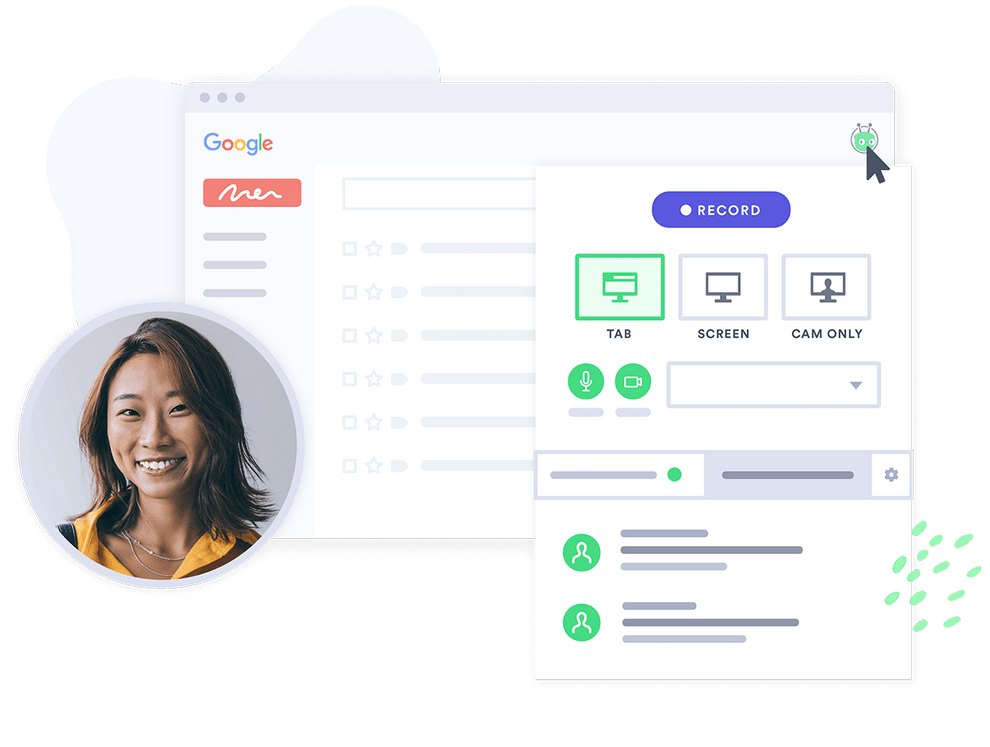
Vidyard is a white-label video streaming platform that provides specialized marketing and lead generation features. These unique business tools are for marketing, sales, and corporate communications.
The Vidyard streaming platform includes tools designed to improve audience reach and viewer engagement so businesses can generate qualified leads.
Key Features:
- Cloud integrations
- Video hosting and streaming
- Secure cloud video platform
- Interactive viewing experiences
- Video SEO
- Personalization, playlist, and other viewing features
- Advanced video analytics
- Robust security options
Pros:
- You can sync your video content with your marketing efforts using its numerous cloud integration options.
- An active community of users, so you can get help and insight from others when needed.
- Customer service agents who can help you with the platform
- Scripting feature that allows you to practice your live stream content beforehand and prepares a script for you. Then, you can read off that script during the live show. That way, you don’t have to remember all the points and can be more relaxed.
- Excellent video-sharing options such as “publish to socials” buttons, schedule releases, and instant link sharing.
- 4K video playback quality.
- Add a call to action in your video player or on the sharing page
- You can easily manage users in your team and enjoy flexibility in customizing permissions to specific users.
- Extensive self-serve helpful resources to guide you through the Vidyard cloud video streaming solution.
Cons:
- Complicated backend
- Consistency issues
- No China video delivery
Upload Guidelines and Specs:
- Minimum dimension: 360p (480 x 360)
- Maximum dimension: 4k (3840 x 2160)
- Video aspect ratio: 16:9, 4:3
- Max file size: 5GB to 16GB (depends on the plan)
- Max video length: 1 hour (live stream)
- Total file storage: Not available
- Compatible video formats: WEBM, MP4, MKV, MOV
Pricing:
Vidyard prices its platform based on the use case, and includes the following packages:
Packages for Individuals and Teams:
- Free: Video sharing; video editing; video sharing; stock AI avatars
- Starter: $59/month; team performance analytics, password-protected videos, and customizable branding
- Teams: Everything in Starter + CRM/MAP integrations for seamless workflows, folder management, video captions, and advanced analytics
- Enterprise: Custom pricing; AI avatars, SSO user management and secure playback, unlimited integrations, custom permissions and security options
All enterprise pricing packages are custom-priced.
6. JW Player

JW Player was founded as a video player and has since become a professional white-label video streaming service. The white-label platform supports both live and on-demand video streaming.
JW Player is a competent player that is based on open-source coding. That gives broadcasters the ability to customize their streaming experience. Moreover, the live streaming platform includes the player, among other valuable features.
Key Features:
- Live streaming and video-on-demand (VOD) hosting
- Cloud-based content management platform
- Custom video galleries
- Up to 1080p HD streaming
- Support for monetization via advertising
- Multi-bitrate and adaptive streaming
- Email support through the $100/month plan level
- Video API access on all plans
- Only custom-priced Enterprise plans offer DRM
- Monetization via advertising
Pros:
- HD streaming
- Video recommendations engine to generate custom “watch next” recommendations for increased viewership
- Global content delivery
Cons:
- No China video delivery
- Only basic security features
- Only ad-based monetization
Upload Guidelines and Specs:
- Minimum dimension: 360p (640 x 360)
- Maximum dimension: 1080p (1920 x 1080)
- Video aspect ratio: 16:9, 4:3, 2.39:1
- Max file size: 25GB
- Max video length: Not available
- Total file storage: 25GB to 500GB (depending on the plan)
- Compatible video formats: MP4, WMV, AVI, MOV, 3GP, FLV
Pricing:
With JW Player, you will need to contact sales to discuss your needs and get custom pricing or start with a free trial.
7. Brightcove
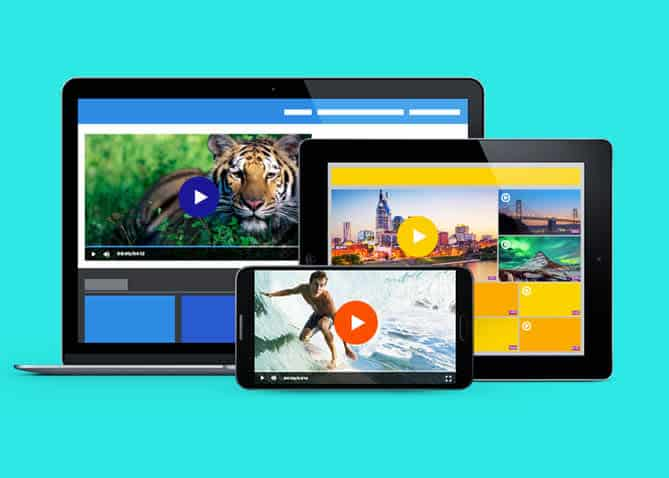
Brightcove is a white-label streaming solution that is designed for larger businesses. Brightcove divides its streaming product offerings into several discrete categories. These include Video Player, OTT Flow, Video Marketing Suite, and several others.
They have recently acquired another video streaming platform called Ooyala, and they’ve since announced the end-of-life plans for the Ooyala platform.
Key Features:
- Live streaming through Video Cloud
- Over-the-top (OTT) streaming
- Advertising and monetization
- Numerous cloud app integrations
- Offers customizable branding features
- On top of the video analytics and reporting feature, it has the option to track your ROI.
Pros:
- A straightforward cloud interface that’s easy for people to use.
- Offers built-in integrations for other cloud apps, allowing you to integrate your video content with other business tools easily.
- High-quality privacy and security.
- Share your live streams in private groups and with the public through your social media channels.
- One of the best cloud storage options for video production, so you can neatly categorize your videos and save them in various playlists.
- All the essential editing tools you need to make small changes to your videos, which is especially beneficial if you often repurpose your live streams.
Cons:
- Lack of fine-grain analytics or reporting
- No China video delivery
- 24/7 support isn’t free
- Although the analytics feature is present, you have to go through some manual workarounds to compare the reports of different videos.
- You can’t find data on the number of unique viewers on your videos or track the number of users at specific time markers.
Upload Guidelines and Specs:
- Minimum dimension: Determined by user
- Maximum dimension: Determined by user
- Video aspect ratio: No restrictions (since Brightcove uses a responsive player)
- Max file size: No limits on file size
- Max video length: No published limits
- Total file storage: Varies by plan
- Compatible video formats: MP4, MOV, FLV, AVI, WMV, MKV, 3GPP
Pricing:
Since Brightcove mainly targets enterprise-level clients, they offer several custom-priced streaming plans at high price points.
The three Brightcove pricing tiers include:
- Starter: includes 50 to 200 videos, up to 100,000 plays, and 2-5 users
- Professional: unlimited videos, 100,000+ plays, and no overages play, with +10 users
- Enterprise: unlimited videos, 100,000+ plays, and no overages play, with 10+ users, unlimited upload, and analytics-only users
Interested broadcasters can contact their sales department to receive a quote or sign up for a 30-day free trial. When you need something simple with complex tools, Brightcove is a good choice.
8. Flowplayer

Flowplayer is an online video platform primarily known for its white-label streaming services and monetization solutions.
Looking for a streaming solution that is simple but capable? Flowplayer could be a suitable option for you.
Key Features:
- HTML5 video player
- White-label streaming
- Award-winning monetization solutions
- Live streaming and VOD hosting
- Powerful video analytics
- Android and iOS SDK for mobile app development
Pros:
- Mobile streaming support
- Tools for marketing
- Dedicated customer support
Cons:
- No China video delivery
- Relatively basic platform
Upload Guidelines and Specs:
- Minimum dimension: 426 x 240
- Maximum dimension: 3840 x 2160
- Video aspect ratio: 16:9 (supports others but 16:9 is the default)
- Max file size: unavailable
- Max video length: unavailable
- Total file storage: 50 GB, 150GB, or custom (depends on plan)
- Compatible video formats: MP4 (recommended)
Pricing:
Businesses should contact Flowplayer sales team for custom-based prices that cater to their specific streaming needs.
9. IBM Video Streaming

IBM Video Streaming is a video self-hosting platform geared towards the enterprise streaming market with various cloud video hosting and streaming services. IBM Video Streaming is one of many offerings from the IBM tech empire.
Like Dacast, IBM Video Streaming offers a great white-label VOD solution and file upload, management, and delivery for live and on-demand content.
Key Features:
- Live and on-demand video streaming
- Secure sharing of online content
- Enterprise content delivery network
- Video distribution and workflow
- OTT video management
- Video monetization
Pros:
- One of the best streaming cloud storage setups, with reliable cloud streaming.
- Responsive customer support, helping you if you ever run into issues.
- Enterprise-grade video capabilities for large organizations.
- Hong Kong (China) video hosting.
- Impressive analytics feature where you can monitor various KPIs of live streaming.
- You can easily upload video files and media for your audience during the live broadcast.
Cons:
- Uses an internal content delivery system
- General plans don’t offer APIs
- The chat feature isn’t the best given that this supports a large audience
- Users report issues with data synchronization and upload when there’s heavy traffic on the platform.
- The file management system isn’t good if you have many files because it gets challenging to find what you’re looking for.
- Although it allows non-hosts to interact with the broadcast and share files, the permission-granting process is tricky and requires a learning curve.
Upload Guidelines and Specs:
- Minimum dimension: 480p (480 x 270)
- Maximum dimension: 4K (3840 x 2160)
- Video aspect ratio: No published aspect ratio
- Max file size: 4 GB
- Max video length: No published limits
- Total file storage: 1TB – 5TB (depends on plan)
- Compatible video formats: MKV, MP4, MOV, FLV, AVI, WMV, MPEG2, H264, H263, MPEG4, VP6, VP8, THEORA, WMV, MP3, AAC-LC, NELLYMOSER, PCM, SPEEX, VORBIS, WMA
Pricing:
IBM pricing plans include the following:
- Start Trial – Video Streaming: Give it a free test drive for 30 days
- Silver: Affordable Essentials, 100 viewer hours, 5 channels, 1 TB video storage, starting at $145/month
- Gold: Standard business features, 2,000 viewer hours, 10 channels, 2 TB video storage, starting at $729/month
- Platinum: Premium Volume scale, 5,000 viewer hours, 20 channels, 5 TB video storage, starting at $1,460/month
- Custom: Please contact IBM Cloud video for custom plan pricing as well as payment plans
IBM Video Streaming also offers an SaaS streaming service with AI-driven deep search for security-rich video communications. Here are the IBM Enterprise Video Streaming pricing plans:
- Enterprise Silver: $847/month
- Enterprise Gold: $2,120/month
- Enterprise Platinum: $5,300/month
- Custom: Contact the sales team
30-day free trials are available for test-driving both the IBM Video Streaming and the IBM Enterprise Video Streaming services.
10. Kaltura

Kaltura is a unique offering among the other white-label streaming options we’ve discussed. The platform uses an open-source layout, which is highly customizable. For that reason, Kaltura is a preferred platform for broadcasters with unique streaming needs.
The downside of Kaltura’s ultra-customizability is that the platform can be confusing. With so many different features, it can be overwhelming for beginner users.
Key Features:
- Cloud video hosting and streaming
- Cloud TV service
- Advanced Security in the Cloud
- Highly customizable
- Integrations for any feature imaginable
Pros:
It is designed specifically for education and large enterprise uses. They offer various monetization options, making it a great choice if you want to earn money through your content.
Cons:
- Many options for customization may get complex for beginners
- Slow uploads to the cloud
- No China video delivery
- Users complain about the lack of sufficient customer support
Upload Guidelines and Specs:
- Minimum dimension: 180p (320 x 180)
- Maximum dimension: 1080p (1920x 1080)
- Video aspect ratio: 16:9, 4:3
- Max file size: 2GB
- Max video length: Not available
- Total file storage: 10GB to Unlimited (depends on the plan)
- Compatible video formats: MOV, MP4
Pricing:
Prices are based on the solutions you’re looking for. These include but are not limited to:
- Free trial: $0 for two webinars
- Business: $150/month billed annually (when billed annually or $199 when billed monthly)
- Enterprise: Custom pricing
- Free trial: 14 days
- Standard: $19/month up to 10 participants per session and up to 10 hrs of cloud recording
- Pro: $45/month up to 100 participants per session and up to 25 hrs of cloud recording
- Enterprise: Custom pricing for up to 10+ classrooms
- Annual discounts: Discounted pricing packages are available for any scale and use-case, enterprise SLA, and developer support. For more information, please contact sales
- Free trial account: $100 worth of credits for 30 days for testing and experimentation with no commitments
- Pay as you go: You pay only for what you use at these credit levels:
- Base plan: $20 one-time annual fee + monthly usage fees
Other services include virtual events, video portal town halls, video messaging, meetings and more.
11. Uscreen
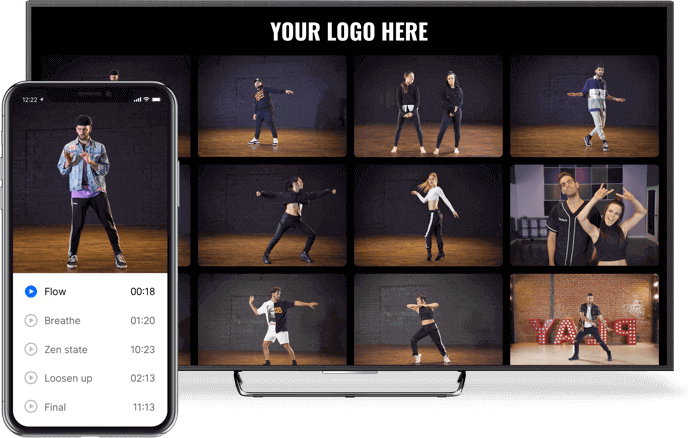
Uscreen is a unified streaming platform that supports live and on-demand OTT streaming. In addition, this live stream solution is equipped with all the tools you need to host and deliver educational content, whether training videos for enterprises or online courses for schools.
Uscreen has streaming solutions for businesses that want to host an online training platform.
Key Features:
- White-label streaming
- HTML5 video player
- Support for marketing tools
- Video analytics
- Community growth tools
- Limitations on monetization
- High-level privacy and security
Pros:
- Generally easy to use
- Clean video gallery layout
- Reliable customer service
- OTT provider
Cons:
- Developer support is needed for some customizations
- Some complaints about the functionality of analytics
- Slow to roll out new features
Upload Guidelines and Specs:
- Recommended dimensions: 1080p/2k or smaller
- Supported aspect ratios: Unavailable
- Maximum file size: 13 GB
- Maximum video length: Unavailable
- Total file storage: 3000, 7500, 7500+ minutes
- Accepted video formats: MP4 (Recommended)
Pricing:
Uscreen has three different pricing plans for broadcasting. The pricing above reflects rates when billed monthly and include:
- Growth: $149/month + $1.99/subscriber
- Pro: $399/month + $1.49/subscriber
- Custom pricing: Customizable plans for enterprise users with greater needs
12. VPlayed

Vplayed is a white-label streaming service that is powered by Contus. The platform supports live and on-demand streaming and is primarily used for educational purposes. However, the platform also supports everything from small projects to large-scale operations.
Vplayed is also very customizable, so it’s an excellent option for broadcasters with unique streaming needs.
Key Features:
- White-label HTML5 video player
- All-devices streaming
- Live streaming and VOD
- Support for video monetization
- Reliable security
- Communication integrations
- Highly customizable experience
Pros:
- End-to-end solution
- Monetization options for revenue generation
- Well-suited for online educators
- No demo version is available
Cons:
- Limitations on analytics
Upload Guidelines and Specs:
- Minimum dimension: unavailable
- Maximum dimension: no larger than source dimension
- Aspect ratio: 4:3, 16:9 (suggested)
- Max file size: No limits
- Max video length: unavailable
- Total file storage: unavailable
- Compatible video formats: not specified
Pricing:
Vplayed does not publish prices on its website. Please contact their sales team for custom pricing.
13. Panopto
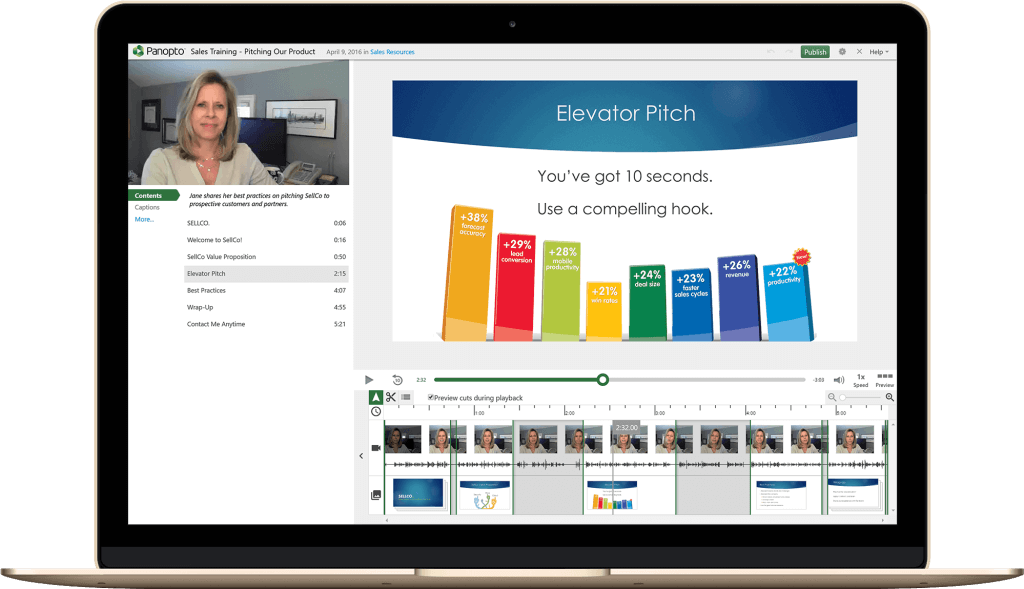
Panopto is a VOD streaming platform that focuses mainly on businesses and universities. This platform is built for streaming, sharing, recording, and managing video content.
With Panopto, users have access to a video content management (CMS) system that supports the management of video streams, playlists, and playback.
Key Features:
- White-label video streaming
- Video-search software
- Stream recording
- Video analytics
- Access control & security features
- API access for customization
Pros:
- Audio and video hosting
- Document indexing
- Full-text search
- Video content
- Asset categorization
- Customizable branding
- China video hosting
Cons:
- No customizable templates
- No image editor
- No SEO management
- No version control
Upload Guidelines and Specs:
- Compatible video formats: AVI, MP4, MPG, WMV, MOV, QT, ASF, 3GP, WMA, MP3, M4V
- All other upload guidelines and specs are only available to paying customers.
Pricing:
You can get a personalized demo to try Panopto. For specific plans and pricing, contact sales.
14. StreamShark
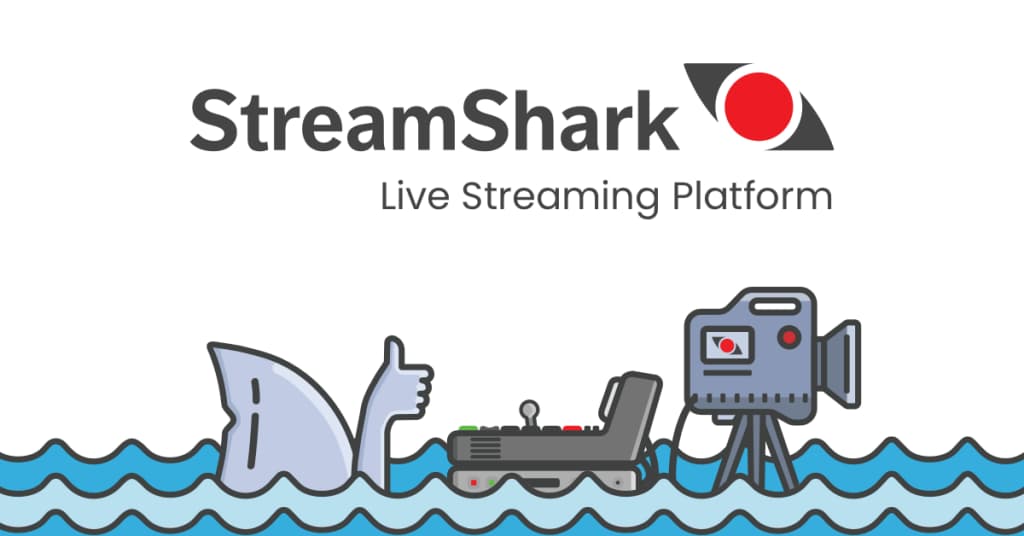
StreamShark is another excellent white-label streaming platform. It provides multi-faceted online video functionality. StreamShark is an offering from MetaCDN, which means it can deliver fast and innovative content.
The white-label video streaming platform live streaming service allows users to manage the different phases of an event’s stream while ensuring maximum reach and reliability. Additionally, the company focuses on providing global video content delivery.
Key Features:
- Customizable video player
- Global content delivery via a multi-CDN network
- Mobile compatibility
- Video analytics
- Privacy controls
- Video monetization
Pros:
- Localized media ingestion
- Video encoding
- Redistribution
- Increased storage space
Cons:
- No embeddable playlists
- Reported limitations on video analytics
- No China video delivery
Upload Guidelines and Specs:
- Minimum dimension: 240p (426 x 240)
- Maximum dimension: 1080p (1920 x 1080)
- Aspect ratio: 16:9, 4:3
- Max file size: Not available
- Max video length: Not available
- Total file storage: 500GB, 1TB, 3TB
- Compatible video formats: HLS, WebM VP9, WebM VP8, WebM VP9 DASH, MP4
Pricing:
Monthly live streaming plans with StreamShark begin at $199 per month and include the following:
- Standard: $199/month; includes 1,000 GB of bandwidth; overage charges of $0.10/GB
- Team: $499/month; includes 4,000 GB of bandwidth; overage charges of $0.09/GB
- Business: $999/month; includes 9,000 GB of bandwidth; overage charges of $0.08/GB
- Enterprise: Please contact StreamShark for their custom enterprise solutions and plans
15. Wistia
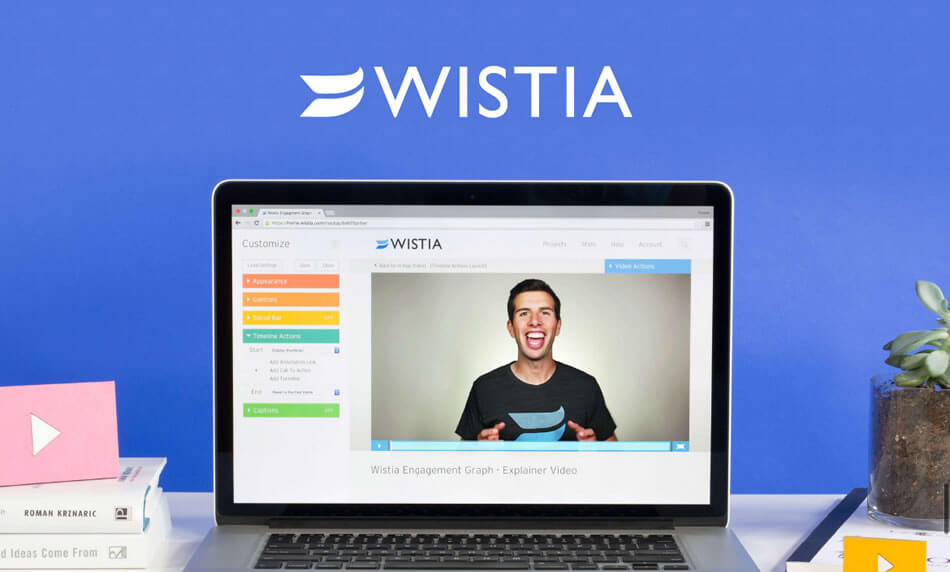
Wistia is a white-label VOD platform that provides streaming solutions for advanced broadcasting. This platform boasts “TV-quality” streaming and is loaded with tools focusing on driving engagement via video. These exciting features include built-in video editing tools, marketing, and organization solutions.
Wistia is not a live video streaming platform.
Key Features:
- Customizable Video Player: Tailor the player to match your brand.
- Advanced Analytics: Detailed insights on viewer engagement.
- Lead Generation Tools: Turn viewers into potential customers.
- Video SEO: Improve search rankings with built-in SEO tools.
- Integrations: Seamless integration with marketing tools like HubSpot and Mailchimp.
- Privacy Controls: Robust options for video security and privacy.
Pros:
- User-friendly interface
- Excellent customer support
- Comprehensive analytics
- Strong focus on security and privacy
Cons:
- Higher price point compared to some competitors
- Limited storage on lower-tier plans
Upload Guidelines and Specs:
- File Types: MP4, MOV, AVI, etc.
- Maximum File Size: 8 GB per video
- Resolution: Supports up to 4K video
Pricing:
Wistia pricing plans include the following:
- Free Plan
- Plus plan: $19/month
- Pro Plan: $79/month
- Advanced Plan: $319/month
FAQs
What Is White-Label Video Streaming?
White-label video streaming refers to a service that allows businesses to brand and customize their own video streaming platform. It enables them to deliver video content to their audience under their own branding and without relying on third-party platforms.
Why Would I Want to Use White-Label Video Streaming?
Using white-label video streaming provides control over branding, monetization, and content delivery. It is particularly useful for businesses looking to maintain a consistent brand image and have more control over their streaming content.
How Does White-Label Video Streaming Differ from Public Platforms?
White-label video streaming differs from public platforms like YouTube or Vimeo by offering a private and customizable streaming environment. With white-label solutions, you have greater control over privacy settings, monetization, and viewer experience.
What Features Are Typically Included in White-Label Video Streaming Services?
Common features of white-label video streaming services include customizable player designs, pay-per-view or subscription monetization options, analytics and viewer tracking, security measures, and the ability to embed videos on your own website.
Is White-Label Video Streaming Suitable for My Business?
White-label video streaming is ideal for businesses across various industries, such as education, media, sports, and more. If you need a tailored, branded video streaming solution with control over content and monetization, it can be a valuable choice.
How Does Content Distribution Work in White-Label Video Streaming?
Content distribution in white-label video streaming involves uploading your videos to a secure server or content delivery network (CDN). These videos can then be streamed to your audience through a customized player embedded on your website or app.
What Are the Key Considerations When Choosing a White-Label Video Streaming Provider?
When selecting a white-label video streaming provider, consider factors such as pricing, scalability, security, support, and the specific features that align with your business goals. It’s important to choose a provider that meets your unique streaming needs.
Evaluating White-Labelling on a Global Scale
Global Positive Points:
- Branding Control: White-label video streaming allows businesses to have full control over branding, providing a consistent and professional image to their audience.
- Customization: The ability to customize the video player and interface enhances the viewer experience and ensures it aligns with the company’s design and style.
- Monetization Opportunities: White-label streaming offers various monetization options, such as pay-per-view and subscriptions, allowing businesses to generate revenue from their content.
- Privacy and Security: Businesses can implement robust security measures to protect their content and ensure it remains private, which is crucial for sensitive or exclusive content.
- Analytics and Insights: Access to detailed analytics provides valuable insights into viewer behavior, helping businesses refine their content and marketing strategies.
- Embedding: White-label solutions enable businesses to embed videos on their own websites or apps, maintaining user engagement within their online ecosystem.
- Scalability: Many white-label streaming providers offer scalable solutions, allowing businesses to grow their streaming capabilities as their audience and content library expand.
Global Negative Points:
- Cost: Setting up and maintaining a white-label video streaming platform can be expensive, particularly for smaller businesses or startups.
- Technical Expertise: Managing a white-label solution may require technical expertise, which some businesses might lack or find challenging to acquire.
- Content Delivery Network (CDN) Costs: CDN services, which are often needed for efficient content distribution, can add to the overall cost.
- Initial Setup Time: Building a white-label streaming platform can be time-consuming, delaying the launch of video content.
- Platform Maintenance: Ongoing maintenance, updates, and troubleshooting can be demanding, especially if the business lacks dedicated IT resources.
- Market Competition: The video streaming market is highly competitive, making it challenging to stand out and attract viewers, even with a white-label solution.
- Viewer Acquisition: Acquiring and retaining viewers can be a significant challenge, as it requires effective marketing and content promotion strategies.
Conclusion
With the help of a white-label streaming platform, you can customize your video player with your branding, preferred color scheme, paywalls, and more. The content is already yours; why not do the same with your video player?
White-label streaming services are essential for professional video hosting and broadcasting. It’s the only way to own your content and publish it on a video platform with no trace of a third-party host.
Dacast offers white-label video streaming on all of our plans, including the Starter plan, which costs just $39 per month. In other words, you never have to pay extra to reap the benefits of our white-label services.
Ready to choose streaming and hosting services with white-label capabilities? You can try out Dacast and all our professional broadcasting features risk-free for 14 days. Explore our custom video player, monetization tools, customization services, and more.
To get started, create a Dacast account today. No credit card is required.
For regular tips on live streaming and exclusive offers, we invite you to join our LinkedIn group.
Do you have any questions, comments, or feedback about this article or other topics you’d like us to cover? Let us know your thoughts in the chat section below.
 Stream
Stream Connect
Connect Manage
Manage Measure
Measure Events
Events Business
Business Organizations
Organizations Entertainment and Media
Entertainment and Media API
API Tools
Tools Learning Center
Learning Center Support
Support Support Articles
Support Articles